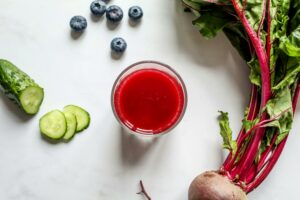Liquid Diet Explained: Is A Full Liquid Diet Dangerous?

Have you heard about these popular liquid diets? They say that you can lose 1-2 pounds per week. All you need to do is switch from solids to all liquids all the time, that doesn’t sound too hard, does it? Okay yes, it’s hard, but 1-2 pounds a week is a lot! That kind of weight loss has got to be worth it! If that’s not enough for you how about purging your body of all those toxins that drag you down all the time? Sound too good to be true? That’s because it is.
The Danger Of A Full Liquid Diet

Is the juice diet actually healthy?
Full disclosure, I’ve never been a big fan of diets, especially those fad diets. That said, it would take a lot to get me to endorse a diet. I’ve been on a couple diets myself, and what I’ve noticed is, that a prominent side effect of diets is constant FOMO.
You can just imagine the torture of watching someone eat pizza and then have to tell yourself “I’m on a diet”. My point is that your FOMO ruins any chances of the diet being effective. Then again, maybe you’re different, maybe diets work for you.
Some of the problems with the liquid diet are much of the same problems that other diets have. As an example, many diets fail to provide sufficient nutritional variety and that’s the main issue with these liquid diets. Still not convinced? By the time I finish going through all the problems with liquid diets you may never touch a liquid again. (if this happens, contact a health professional)
For starters, you’re never satisfied. In a given day, the typical woman needs about 1,800 calories to survive, while the average man needs about 2,500 calories. Guess how many calories you get with a liquid diet: Between 600 to 1000 (on average). But that’s a good thing, isn’t it? Well, not really. There are many underlying issues involved with such drastic cut in calorie intake. I’ll start with the most distressing first, although to be honest, it’s hard to choose since they’re all pretty distressing.c
This is the case with many diets which is why you’ll usually hear physicians recommend diet and exercise, because dieting is a cheat-code, and shortcuts rarely work in real life. Another issue found with malnutrition is that it leaves you feeling lethargic, and that’s no good either.
Remember that whole detox thing? I’m not going to go into whether or not that’s actually true, but think of the whole point of detoxing, it’s to feel better, if you’re constantly lethargic, you don’t feel good. But wait there’s more, undernourishment also has a habit of making you slow. It seriously messes with your ability to think, but on the bright side, if you can’t think, it might not bother you.

Malnourishment can leave you feeling slow and tired.
Furthermore, besides for a lack of calories, liquid diets also lead to not getting enough, protein, fats, or carbohydrates. Yes I know all of these have been given negative connotations by the community at large, but the truth is, that you need these things to be healthy, it’s just a matter of moderation.
“Hold on just a minute,” you might say, “don’t doctors prescribe liquid diets?” Sure they do. Doctors will often prescribe liquid diets, for weight loss or for more complex medical reasons, however, they tend to do it judiciously. When they do, the patient has to undergo intense medical supervision, often having to deal with regular blood tests and check-ups to make sure they are getting the sufficient nutrition.
So what are the most important attributes of a diet in order for it to be successful? To answer that, let’s explore the broad definition of a diet. A diet is nothing more than a set of eating habits. The best type of diet is one that fulfills your cravings while keeping you nutritionally balanced and consuming what your body needs to function. In other words: Moderation.
My personal approach to healthy eating is to look at the nutritional value of everything I consume. Since if I’m aware of it, I’m keeping track, which is half the battle. This way I get to have whatever I want and never suffer from FOMO.
Thanks for joining us here at Maple Holistics! You may also enjoy reading about the endless benefits of Grapefruits, Apricots and Bananas!
Conclusion
There is still much debate regarding liquid calories and feeling full. It’s clear that people who drink their calories do not tend to consume any fewer calories later. In other words, even those who feel full after drinking juice, milk, or other high-calorie drinks are still likely to eat a normal amount at their next meal. As a result, these people can be potentially doubling their intended calorie intake and ultimately ruin their diet plans.
The problem with juicing is that it may not be as good for you as you might think. In fact, besides for being ineffective at causing weight loss, juicing fruits and vegetables actually removes a lot of their healthy fibers, vitamins, and nutrients. Instead, consider switching from juices to smoothies. Smoothies, although blended, still contains most of the healthy components from your ingredients.
If you have the choice to get your calories from solid food or juices, you definitely ought to pick food. Because juices do not leave you feeling full for long, you are likely to consume more calories later. Additionally, keep in mind that fructose, the natural sugar found in fruits, gets processed by the liver. If you are juicing and overwhelming your liver, you may be damaging the organ in addition to potentially gaining weight.
The best thing you can do to lose weight is learning to embrace moderation. Instead of cutting out your favorite foods, I recommend both finding healthier alternatives and cutting down on portion sizes. For example, popular meats like ground beef and Italian sausages have upwards of 30 grams of fat per 3 oz. serving, compared to only 10 grams of meats like veal, beef liver, and ham.
Overall, juicing may seem like a good idea, but the risks far outweigh the benefits. Yes, juicing is a great way to get your daily intake of fruits and vegetables, but there’s a lot more to take into account.


